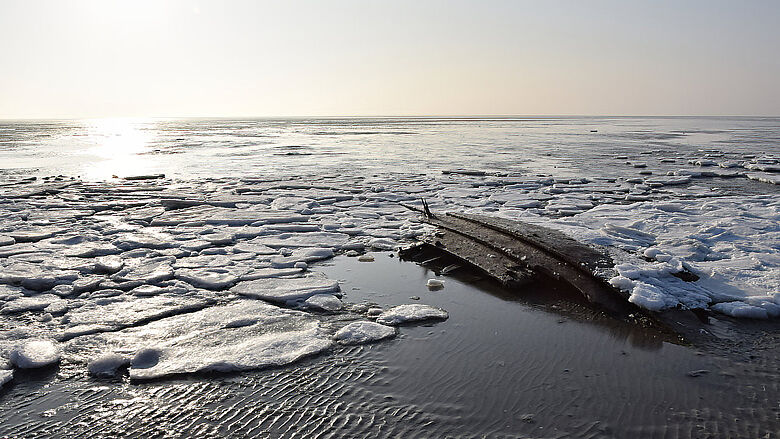In a fascinating turn of events, a wooden shipwreck has been uncovered near the village of Rantum on Sylt, a picturesque island in northern Germany. This discovery, revealed by the shifting sands of the North Sea following Storm Bernd, offers a glimpse into the region’s storied maritime history.
The Discovery: A Glimpse of the Past
On January 12, 2025, beachgoers stumbled upon the remains of a wooden shipwreck. The find was promptly reported to local historian Gunter Schröder, who alerted the Archaeological State Office of Schleswig-Holstein. Recognizing the importance of the find, archaeologists visited the site a week later to document the remains.
However, the North Sea proved to be unpredictable. Within two days, shifting sands had buried the wreck, making further examination impossible until tides reveal it once more. Despite this setback, initial analysis from photographs suggests the wreck is from a 19th- to 20th-century wooden sailing vessel, identifiable by visible copper bolts in its construction.
A Legacy of Maritime Discoveries
This find near Rantum is not an isolated event. The North Frisian Wadden Sea, known for its perilous waters, has yielded several significant wrecks in recent years:
October 2016: A wreck at Hörnum Odde, dated to approximately 1690.
February 2017: A 1609 wreck near Japsand.
February/March 2022: Three wrecks on Süderoogsand, including one from 1733 and another from 1904.
These discoveries underscore the dangers faced by sailors navigating these treacherous waters in past centuries.
The Perils of Seafaring in the North Sea
The North Sea coastline has long been a graveyard for ships, particularly during the age of sailing vessels. Strong westerly winds, the lack of natural harbors, and the region’s shifting sands often spelled disaster for mariners.
One notable example is the Dutch merchant ship AMSTELLAND, which ran aground in 1752 near Königshafen despite being close to a seemingly safe bay. Such incidents were so frequent that they spawned a local economy based on recovering flotsam and rescuing survivors.
A Modern Perspective: Climate Change and Awareness
The increasing number of shipwreck discoveries raises intriguing questions. Could they signal changes in the coastal landscape due to climate change, such as accelerated erosion? Or do they reflect a growing interest in preserving and studying historical artifacts? Likely, both factors play a role.
The Significance of the Rantum Wreck
The newly uncovered wreck is a valuable addition to the region’s rich archaeological record. While further investigation is delayed, its discovery highlights the enduring connection between the North Frisian Wadden Sea and maritime history.
As researchers continue to probe the mysteries of these wrecks, the stories they tell about trade, exploration, and survival will enrich our understanding of the past.
This remarkable find, along with others along the North Sea coast, serves as a powerful reminder of the region’s historic role in maritime commerce and its challenges. Whether shaped by nature or human curiosity, the legacy of these shipwrecks continues to captivate and inspire.
By Oguz Buyukyildirim
Published: January 27, 2025
Tags: Archaeology, North Sea, Shipwrecks, Maritime History, Climate Change







